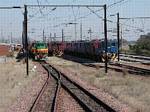
This page is a collection of pictures and tech sheets about Spoornet locomotives and some rolling stock. It is all but complete as there is a vast array of rolling stock out there.
PLEASE BE PATIENT WHILE ALL THE GRAPHICS LOAD
(After all that is what this site is about)
6E | 7E | 8E | 10E |18E | Class 36 | Class 38 | The Blue Train | Trans - Karoo | Passenger cars | Metro mu's
More pictures | Rovos Rail pictures | Credits | Page 2 (Not online yet) | Cheeky's page (Not subject related)
Most of the pictures were taken at the Pyramid South Loco depot, situated to the north of Pretoria, Gauteng, South Africa. The camera used was an Epson PhotoPC 3000Z. The photos can not be downloaded from this site, but if you want the original, do not hesitate to contact me. Due to a couple of requests and complaints, I've changed the color and style of the site. The layout was left as it is. I hope this style will be more pleasing and easy on the eyes.

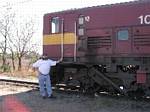
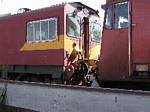
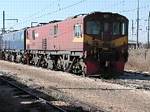
The pictures above are from left to right:
Me standing next to a class 10E locomotive, a class 10E and class 6E coupled together and of class 10 E locomotives showing the old and new, blue, color scheme. The class 10E and 6E locomotives are both electric locomotives used by Spoornet and run on a supply voltage of 3000 vdc. Spoornet is busy replacing the stock of aging 6E locomotives with the 10E unit. Some of the 6E units are to be rebuild and will be called 18E units.
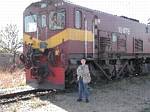
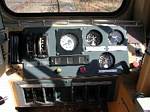

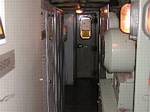
The pics above show the layout of the dashboard on the 10E unit as well as views of the passage through the unit. The passage layout is almost in every aspect similar to that of the 7E electric unit also in use by Spoornet. The picture at the top is of my son next to a 10E locomotive.

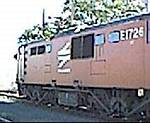
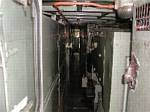
The dash layout and controls of a 6E unit are shown above. The second picture is of an outside view of the 6E and the last, of the passage down the middle of the unit. Unlike the passages of the 7E and 10E units, that have a kink in the middle, the 6E passage is straight from End 1 to End 2. I worked on these units all over the Gauteng area back in 1987. They could be troublesome due to the fact of the elementary warning system on the dash, consisting of only a white light, that would illuminate should you be running multiple units, and one of the units should fail or develop a problem. Some of the 6E units are being converted by Spoornet to accommodate female staff. This entail the conversion of the number 2 End by installing a toilet and closing off the cab windows. These converted units, called an 18E, will sport different bogies and gear ratios to improve traction and pulling power. Unfortunately I do not know if and when these converted (18E) units will be released into service, and if Spoornet is committed to the conversion process. Should anyone have any more info on these 18E conversions please email me with details or info.
28/08/2002 I can confirm that the 18E units have been released into service by Spoornet. These units are the old 6E units that have been converted to include among other modifications a toilet in the No. 2 End. Below is a picture of two of these units sporting the blue color scheme and numbers 18 008 and 18 009. Next to it is a picture of the new 18E in profile. If you study the left hand picture closely, you will notice the absence of windows on the one side, thus this will be the end converted to house the toilet. I will undertake a trip in the not too distant future to Sentrarand, to see if I can obtain my own pictures of these converted units. According to the newspaper article some of these units have been deployed as pulling power on the Blue Train.
Photos scanned courtesy of the local newspaper.
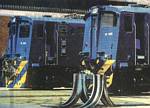
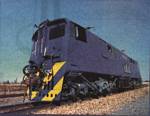
A couple of 6E units were modified back in the '80s and called 12E's. The gear ratios and some external features were changed on these (12E) units and was an attempt by Spoornet to introduce high speed locomotives after the failure of the Metroblitz inter - city service.
Although this is essentially a dc powered locomotive, some were modified to run of 25 000vac. One of which is shown in the following pics. Unfortunately I couldn't get pictures of the cab and dash as the cab doors were locked on this one.
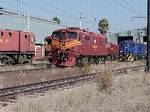
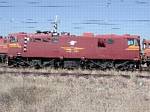
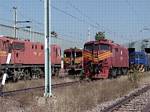
Below are some pics of the 7E electric loco. This loco runs off a supply of 25 000vac. Although it looks similar to the 10E unit, this locomotive have much better traction and pulling power. This is a favorite locomotive to me due to the fact that I did a short stint on it on the Pyramid - Pietersburg, the Pyramid - Thabazimbi and Pyramid - Atlanta routes back in 1987. Most of these trains worked, were utilizing air brakes and not the standard vacuum brake system. This resulted in longer trains than usual. Iron ore was transported from Thabazimbi and lime from Atlanta. I enjoyed working on these beasts as they are a pleasure due to the fact that they are much cleaner than the 6E unit, a result of the enclosed components in the passage. My experience on the 6E was that you always end up dirty at the end of your shift. Cab space on the 7E and 10E units are significantly larger than that of the 6E.
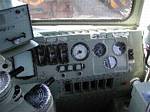

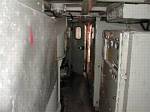
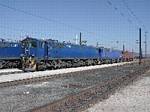
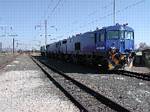
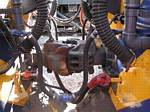
The pictures above show from left to right:
The dash layout of the 7E locomotive. Notice the white plastic screen on the left below the radio and the three small ones in the center. Should a unit fail, the fault will show up on these screens. In the passage of the unit is a smaller but similar screen. The one of the unit that is failing will be showing the fault in the passage. Much easier to determine which unit and what is wrong, when running multiple units, than the 6E with its one white light. If this happens on a 6E, you will have to check each units gauges and low voltage panels to determine what is wrong. The radio is used to communicate with other trains among other things. The main use of it though is to check the pressure in the brake pipe on trains running air brakes. This is done via a device called a telemeter mounted as a terminator on the brake pipe on the last wagon of the train.
The next two pictures show the passage on the 7E on both sides of the kink. In these you can see the cabinets in which the compressor and other components such as the blowers are enclosed. Below are pictures of 7E units being readied for departure. The picture on the left show both the old and new color schemes. The picture on the right is of the couplers, cables and brake pipes on the 7E. The thin pipe connected to the red taps and with the blue coupling, show that this train will use air brakes. If the train was using vacuum brakes, the two thick black pipes would have been connected instead of the thinner ones.
A note of interest though. Although the specs specify the supply voltage of a 7E to be 25 000vac and not less than 17 000vac, I once experienced on a trip from Atlanta with a full load of lime, that the unit can function at lower voltages without any loss in pulling power. None of the units tripped or failed on that trip where the line voltage sometimes dropped to as low as 13 000vac.
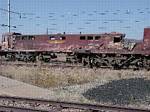
Unfortunately, accidents do happen. This picture show a couple of crash damaged 7E's being stripped of usable parts.
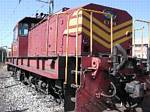
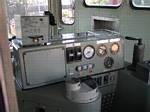
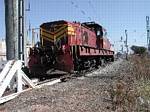
The pictures above are that of an 8E electric shunting locomotive. The first is of End 1, the dashboard view (note the radio on top) and End 2. These units were once very common in the large shunting yards all over the country, but their numbers are now dwindling. I had the luck to find this one at Capital Park in Pretoria. This unit runs on a 3000 vdc line supply. The cab layout is the same at End 2 as that of End 1. These units normally only worked with one engineer and a shunter. No assistant crew member was used.
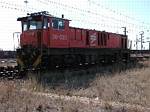
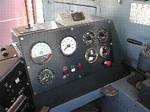
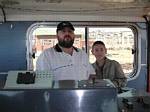
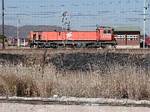
A class 38 locomotive is shown in the pictures above. This one is relatively new as can be seen in the pic of the dash. There are two models of the class 38 in South Africa - an electric only version and a diesel-electric / electric version. This diesel-electric / electric locomotive is powered by either a diesel engine (Barlows Caterpillar engine) or from a line voltage of 3000 vdc. This one was photographed outside the workshops at Pyramid South loco and was the only one of this class at the loco. The one in the pictures is an electric only version. I believe these locomotives are mainly based at the Capital Park loco, but I stand to be corrected. Rumors were heard a while ago that Pyramid South will be the main loco in the Pretoria area and that Capital Park would be scaled / closed down. I reckon this is because Pyramid South can accommodate both the ac and dc powered locomotives.
23/02/2004 I received an e-mail today from a training officer at the Germiston diesel depot. He corrected my assumption that these locomotives are to be based at the Capital Park depot when they are in fact based at Germiston. I thank him for his input and in clarifying the matter. He also mentioned that these locomotives have a top speed of 140km per hour and in fact broke the record for running between Johannesburg and Cape Town by doing the trip in less than 12 hours. This run was a once off done to achieve this. The operational locomotives are electronically governed and can only reach a top speed of 101km per hour.
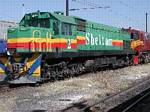
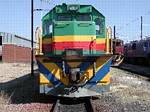
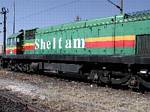
This one is a bit of a mystery to me. The only way that you can discern this is a Spoornet loco, is by looking at the paintjob on the cow catcher. All the locomotives in the new blue scheme sport this blue and yellow cowcatcher. A source told me that a couple of these diesel - electric locomotives were imported by Spoornet from the U.K. and called 4E's.They were put into service without being repainted in the Spoornet scheme. Apparently this is the last of those imported locomotives still seeing active duty. I could not confirm this and are open to any discussion on this matter. I could not determine the class or model of this locomotive.
13/02/2003 I got an e-mail regarding the above mentioned diesel - electric locomotive. According to the info, the 4E is a vintage electric unit of which only one exists in South Africa and is being kept in Bellville. The locomotive in the pictures is according to the e-mail a class 33-200 diesel - electric that was used by Spoornet. The apparent nickname for these locos was "Brommers" ( Afrikaans for blowflies) and I deduct this was because of a distinct engine sound. I thank the source for his input and effort in trying to clarify this matter. I still wonder about the paintjob on this one though. Anybody that can clarify that?
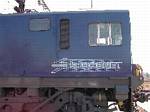

Two pictures of the new blue Spoornet color scheme. In the background is a 7E with the previous orange color scheme.
Below is a picture of a couple of class 36 diesel - electric locomotives in the shunting yard at Capital Park.
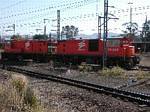
I don't have any more info on these or any other diesels used by Spoornet. If someone out there can help with photos about diesels and their specs please mail me. I have other pics but they are copyrighted and I can't use it here.
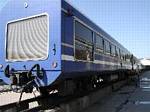
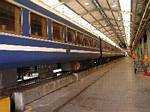
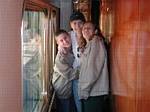
Above are pictures of the Blue Train. This is the flagship of Spoornet and can be compared to a five star hotel. Unfortunately the camera batteries gave out while taking pictures inside of the lounge and bar cars. The compartments were all locked which is understandable due to the expensive trimmings etc.
Below are passenger mainline cars showing of three of the color schemes used. The first picture is of the Shosholoza Meyl that covers various main line routes including the Johannesburg - Messina route. The second pic shows two of the color schemes used on the other mainline routes. There are a variety of schemes used on the mainline routes and they vary from train to train. My next big mission is to get to Braamfontein, Johannesburg, to photograph these color schemes and add them all here. The third picture is of a new generation Metro Intercity motor unit. This model was unfortunately removed from service due to a variety of problems. The last two pictures are of the latest model called the 10M5 GOMOD train set and show the external and cab views. This model feature an ultra modern bolt-on cab and the train set is described as built for people and commuter friendly. These train sets were put into service in July 2005.
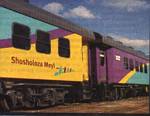
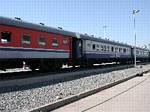
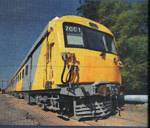

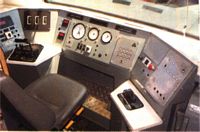
The pictures below show from left to right:
The BJ's color scheme on the dining car of the Trans - Karoo express (a mainline express train that operates between Pretoria and Cape Town), the dirty end of a 6E unit (coupled to the Trans - Karoo) the dirt is a result of grease put on the overhead power line to reduce friction, the steam wagon attached to the train and the interior of the steam wagon. The steam wagon is used to generate steam that is utilized by the heaters in the compartments of the carriages. The Trans - Karoo Express running between Pretoria and Cape Town, was re-launched in the Shosholoza Meyl color scheme on the 15th of August 2003 and won't be sporting the old blue and white (InterPAX) coaches anymore as previously used on the mainline routes. Most of the trains running on the mainline passenger routes, now sport these new colors. All 2000+ coaches used on the Trans - Karoo trains will be redone in the new colors. Although it will in future be known as the Shosholoza Meyl running between Pretoria and Cape Town, the name Trans - Karoo will still be used as it is synonymous with this specific train and route. Pictures of these color schemes are shown above.
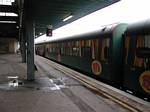
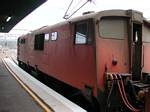
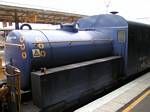
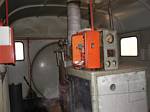
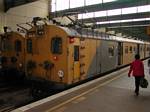
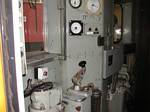
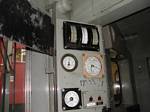

The pictures above show the color scheme used on the Intercity Metro motor units and carriages. The first pic is of the rear end of one of these trains. The second is of the driver controls in the drivers cab and the third of the gauges and speedometer. The last picture show two of these Intercity trains ready for departure. These electric motor units operate of a line voltage of 3000vdc. A train may consist of more than two motor units, where the additional motor units will make out part of the train and be live (running of the line voltage). An Intercity train will have at least two motor units, one at the front and one making up the rear end of the train.
The picture below is an interior view of one of the Intercity carriages. Some carriages will have the seating arranged at right angles to the sides of the carriage. These are aptly known as "churches" by people because of the seating that resembles the benches in a church.
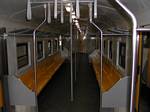
As I stated at the start of this page, it is far from complete. I need to add pictures of classes like the 14E high speed goods locomotive, the different classes of diesels and rolling stock used by Spoornet to make this page a realistic reflection of all the locomotives and color schemes that are used by Spoornet. I'll appreciate any contributions or links that might be added to this site to complete the overall picture.
Page 2 | More pictures | Rovos Rail pictures | Cheeky's page
29 May 2008 Some sad news people. The trains featured on the Rovos Rail page, burned down at the company's headquarters in Pretoria on Wednesday 14 May. The coaches were built over 80 years ago and the estimated damage is well over ZAR 1 000 000.00.
As yet the cause of the fire is undetermined.
I wish to thank the following people for making this site possible:
My family for the patience and understanding. I can be a bore sometimes, but they understand my passion for anything rail related. Especially my wife who went to and took the Rovos Rail pictures on a dreary winters day in all but perfect conditions with an unfamiliar camera.
The security staff, train personnel and supervisors at the different sites and stations that I have visited over time.
Paul Norris for lending me a proper camera when I needed one to get that once in a lifetime shot. Without his help this site would never have happened. Thanks Son.
Die Beeld and Pretoria News newspapers. I had to scan some pictures that I could not obtain anywhere else but from these papers.
The rest of this site
is and will for some time be

Page 2 to be added soon (I was hoping to have it up by the latest February 2003, but unfortunately, my cd's with all the new pictures and the camera walked off in the hands of someone. This is unfortunately a problem in this sunny country of ours [we jokingly call it the RDP] and I will have to get a new camera and do all my trips over again to gather the pictures. I do apologize for this.)
Site built and maintained by Hannes Olivier
Best viewed at 800 x 600 with
![]()
© Copyright 2002-2008 Hannes Olivier